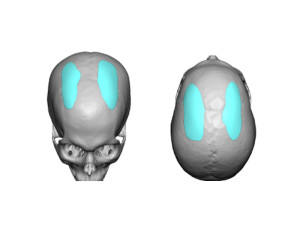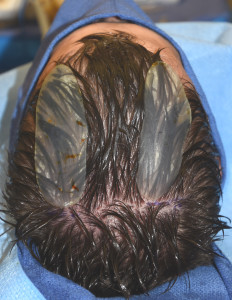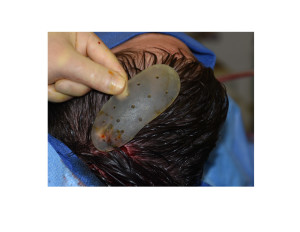Background: The top of the skull has the best aesthetic shape when it is a smooth convex curve from one temporal line to the other. This shape can be altered and is influenced by the original sagittal suture line which runs down the middle of the skull between the two original anterior and posterior fontanelles. While it should be smooth and unraised sagittal crest deformities can occur which can be argued are very minor variants of the well known sagittal craniosynostosis condition.
A sagittal crest can develop which appears as a prominent bony ridge down the middle. This can make the bony area between the temporal lines at the side and the midline of the skull (parasagittal area) appear depressed or too shallow. It is also possible that the height of the midline of the skull is normal but that the bony problem is that the parasagittal region is underdeveloped. Either way the top of the head does not have a convex shape and appears irregular in contour.
To create a more convex shape to the top of the head, it is necessary to determine whether sagittal crest reduction needs to be done or parasagittal augmentation is more appropriate. Computer imaging from the frontal view is very helpful in this regard although there are limitations to it based on the length and density of one’s hair.
Case Study: This 24 year old male wanted to improve the shape of the top of his head. He felt that he had two grooves on each side of the middle of the skull running from front to back. While they were not big or severe they were bothersome to him. He felt that the height of the middle of his skull was fine and it was the sides along it that were too deep.
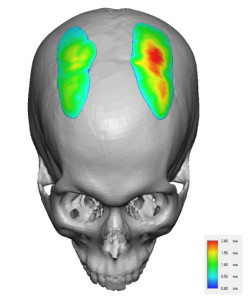
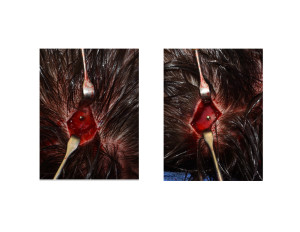
Parasagittal grooves or depressions can be augmented to help create a more convex head shape across the top. Given their small size in many cases and the need for perfectly smooth edges that lay flush to the surrounding skull bone, a custom computer-designed implant approach is needed. This also allows the skull implants to be inserted through the smallest possible scalp incisions with assurance that they will create the best possible contour result.
Highlights:
1) Parasagittal skull deficiencies can occur due to either a high sagittal crest, low parasagittal areas or both.
2) Correction of low parasagittal areas of the skull is done by augmnetation to bring them closer to the level of the sagittal crest.
3) Custom parasagittal skull implants are the most accurate and least invasive method to augment long slender skull deficiencies.
Dr. Barry Eppley
Indianapolis, Indiana



